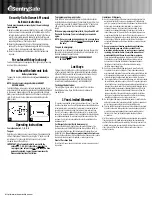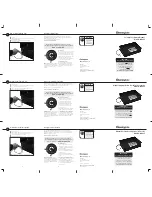
Glossary of abbreviations and terms
Code:
Numerical sequence of 8 digits for identification of the operator consisting of ID and PIN.
-
ID:
fixed 2
-
digit operator number.
-
PIN
:
freely selectable 6
-
digit combination (Notice, do not use personal data such as for example date of birth).
-
Operator:
the master, user and courier are operators of the lock –
each operator of the lock has an individual ID (00, 01..30; 95)
assigned.
-
Master code
: ID 00; the highest code of the code hierarchy, can open the lock, change its own code, it is required for almost all
programming functions of the lock. Can also perform programming functions independently in the double
-
code mode.
-
User code
:
ID 01 to 30, can open the lock and change its own code.
-
Courier code:
ID 95, can open the lock without waiting for an opening delay which might be programmed and change its own code.
-
Assembler code
: has no ID, can open the lock during mounting at the factory.
-
OD
:
adjustable time which has to pass before the lock can be opened.
-
OST
:
Opening standby time: adjustable time which starts after the opening delay; The lock can be opened during the opening
standby time.
-
Guard time
:
After entering the code 3 times incorrectly the guard time is activated, no inputs are possible at the lock during the guard
time.
-
Double code
: Two different valid codes are required to open the lock.
-
Silent alarm
:
If the lock is connected to an external alarm system (intruder detection system) and this function is activated at the lock, a
silent duress alarm can be triggered (not perceivable for the intruder).
-
EMA
:
Intruder detection system: external alarm system for evaluation / forwarding of the duress alarm or secured permanent
power supply (not included in the scope of delivery).
-
Undervoltage indication
: indicates that the batteries are low and must be replaced as soon as possible in order to ensure secure function
of the lock.
-
AHK
:
Take
-
off contact: A contact in the input unit which detects whether the input unit has been opened (e.g. for battery
replacement).
-
Audit
:
All relevant events (opening, closing, programming etc.) are saved in the audit memory (approx. 200 events) of the lock. If
the memory is full, the oldest entry is overwritten automatically. The audit can be read out using software.
-
Reset
:
Reset of the lock to the delivery state, only the master code and audit remain unchanged.
-
Inspection key:
The inspection key can open the lock any time mechanically independent of the electronics. Opening by means of the key
does not have any OD or guard time. The inspection key can also be used to assign a new master code and reset the
complete lock. Reconfiguration of the lock can be implemented using the inspection key and software without knowing or
changing the master code. Therefore, the inspection key is positioned higher in the code structure than the master code
and must be stored in a safe place (not in a secure storage unit).
Lock system: Input unit and lock
Lock housing and interfaces
The entire lock system consists of a visible input unit and the
lock installed in the secure storage unit. All programmed codes
and functions are saved only in the lock and, thus, in the secured
area.
Figure 2: Mini
-
USB soc-
ket Special interface,
only in connection with
original Kaba Mauer
CB30 Use PC cable!
Figure 1: Input unit













